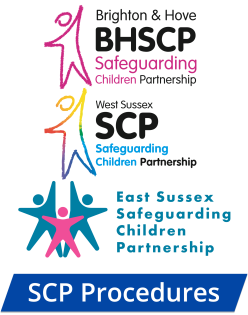Last reviewed in October 2025.
Next review due October 2027.
October 2025: this chapter was amended throughout in line with local practice.
CONTENTS
1. Purpose
The ICPC (Initial Child Protection Conference) brings together family members (and the child, where appropriate), advocates, and key professionals to assess safeguarding needs and decide on actions to safeguard the child’s health, safety, and development. This includes unborn children, where a Pre-birth Conference may be appropriate.
Professional Difference Statement:
In safeguarding practice, constructive professional difference is both expected and welcomed. It reflects a healthy, collaborative system where practitioners – regardless of role, qualification, or seniority – are empowered to speak up when they believe decisions or actions may not sufficiently protect a child’s safety or wellbeing. This inclusive approach values the unique perspectives and expertise of all practitioners, and supports a culture of respectful challenge, shared responsibility, and continuous learning.
At the Child Protection Conference, the concept of significant harm is used to guide proportionate decisions about whether a child requires a Child Protection Plan. This involves:
- weighing evidence of actual harm or credible risk, including patterns over time;
- considering the child’s lived experience, including emotional, cultural, and relational dimensions;
- assessing the family’s capacity and willingness to make and sustain change;
- balancing urgency with support, ensuring that decisions are timely and protective without being punitive or overly procedural.
Proportionate Planning
Where significant harm is identified or likely:
- a Child Protection Plan should be developed collaboratively, with clear, achievable goals;
- the plan should be dynamic, responsive to new information, and regularly reviewed;
- decisive action must be taken when risks escalate, avoiding delays due to professional disagreements or procedural inertia;
- a child considered to be at continuing risk of Significant Harm should be safeguarded through a multi-agency Child Protection Plan unless the Conference is satisfied that an alternative multi-agency Plan can offer sufficient safeguards.
Inclusive Practice
- ethnicity, culture, disability, and other intersecting factors must be considered in assessing harm and planning interventions;
- chronologies should reflect patterns of harm and resilience, not just incidents;
- children’s voices and family perspectives must be actively included in decision-making.
2. Requesting a Conference
- any senior professional from a partner agency may request an ICPC in writing to the Social Work Manager;
- the Conference must consider all children in the household, and any siblings that do not live in the household who have contact with the family, even if concerns relate to only one child;
- a Child Protection Plan may be developed for one or more children. If new concerns arise about siblings, a further ICPC should be held – ideally combined with any upcoming Review Conference.
3. Timing
- the ICPC must be held within 15 working days of the Strategy Discussion that initiated the Section 47 Enquiry;
- it should be scheduled before the expiry of an Emergency Protection Order if further legal action is planned;
- in exceptional cases, a delay may be authorised by a senior manager, with rationale recorded and shared with relevant agencies. An interim safeguarding plan must be in place.


